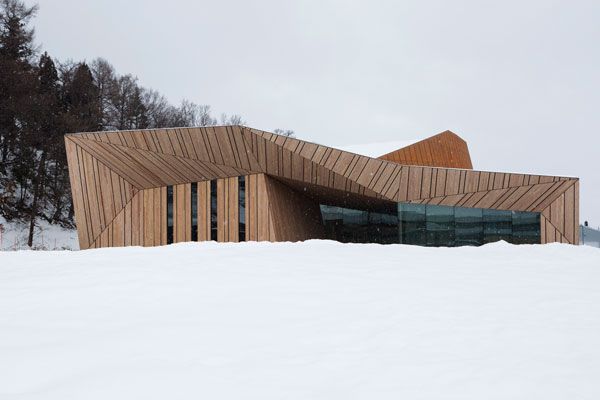Story continues below advertisement
The building’s striking wooden structure forms a geometric silhouette while complementing the natural surrounding landscape. Inside, high ceilings and wide glass window panels invite generous natural light into the open space.
Created over a six-year design process and an 18-month construction period, the cultural complex contains a theatre, auditorium, cafe and community centre held over three floors and spanning a total area of 4,000 square metres.
Story continues below advertisement
Using locally-sourced materials and local craftsmen to assist in construction, the building’s dominant wooden structure uses Iiyama timber while traditional Japanese washi paper can be found in the interior detailing.
Various waterproofing elements were considered and integrated into the building’s architecture, including waterproof paint, water-resistant steel sheets, and an external asphalt waterproof roof with protection concrete. Galvanised steel plates and TATEHAZE-metal were also used for the roofing.
The building’s wooden and steel interior was inspired by ‘Nakamichi’ passage design, seamlessly connecting each room and space and encouraging a diverse and flexible use of each location. Unlike most independent public spaces, the Iiyama City Cultural Exchange Centre is meant to be a social space, encouraging interaction, cultural engagement and connection.
From afar, the building’s silhouette integrates into the landscape as a hill itself, yet provides a complementary contrast to the new railway station running parallel. Its wood and steel interior and exterior is a marriage of modernity and tradition, while the design supports the area’s harsh winters and the need of the locals for a public space that promotes community and connection.
Kengo Kuma & Associates
kkaa.co.jp

